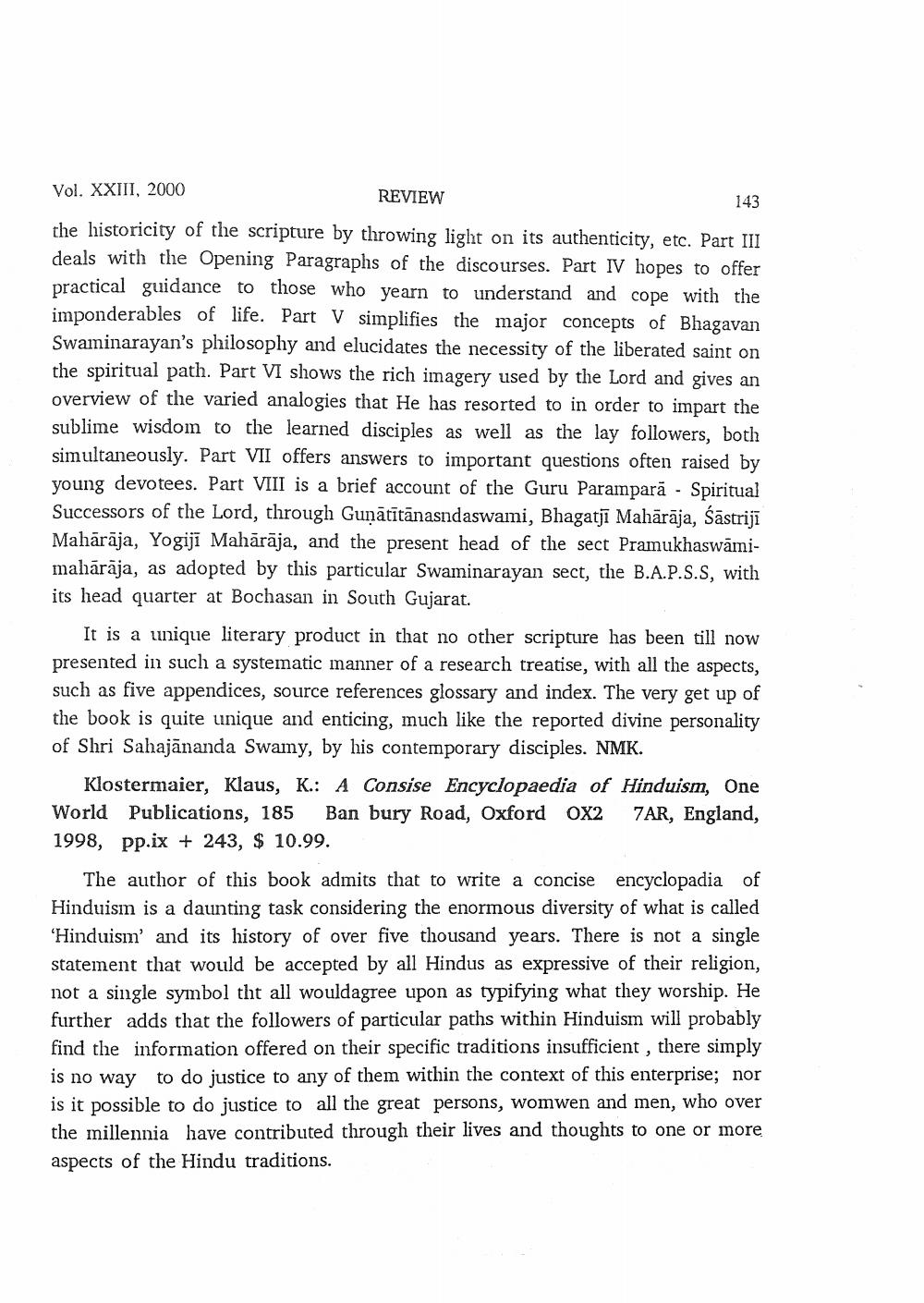________________
Vol. XXIII, 2000
REVIEW
143
the historicity of the scripture by throwing light on its authenticity, etc. Part III deals with the Opening Paragraphs of the discourses. Part IV hopes to offer practical guidance to those who yearn to understand and cope with the imponderables of life. Part V simplifies the major concepts of Bhagavan Swaminarayan's philosophy and elucidates the necessity of the liberated saint on the spiritual path. Part VI shows the rich imagery used by the Lord and gives an overview of the varied analogies that He has resorted to in order to impart the sublime wisdom to the learned disciples as well as the lay followers, both simultaneously. Part VII offers answers to important questions often raised by young devotees. Part VIII is a brief account of the Guru Paramparā - Spiritual Successors of the Lord, through Gunātītānasndaswami, Bhagatji Mahārāja, śāstriji Mahārāja, Yogiji Mahārāja, and the present head of the sect Pramukhaswamimahārāja, as adopted by this particular Swaminarayan sect, the B.A.P.S.S, with its head quarter at Bochasan in South Gujarat.
It is a unique literary product in that no other scripture has been till now presented in such a systematic manner of a research treatise, with all the aspects, such as five appendices, source references glossary and index. The very get up of the book is quite unique and enticing, much like the reported divine personality of Shri Sahajānanda Swamy, by his contemporary disciples. NMK.
Klostermaier, Klaus, K.: A Consise Encyclopaedia of Hinduism, One World Publications, 185 Ban bury Road, Oxford OX2 7AR, England, 1998, pp.ix + 243, $ 10.99.
The author of this book admits that to write a concise encyclopadia of Hinduism is a daunting task considering the enormous diversity of what is called 'Hinduism' and its history of over five thousand years. There is not a single statement that would be accepted by all Hindus as expressive of their religion, not a single symbol tht all wouldagree upon as typifying what they worship. He further adds that the followers of particular paths within Hinduism will probably find the information offered on their specific traditions insufficient, there simply is no way to do justice to any of them within the context of this enterprise; nor is it possible to do justice to all the great persons, womwen and men, who over the millennia have contributed through their lives and thoughts to one or more aspects of the Hindu traditions.




